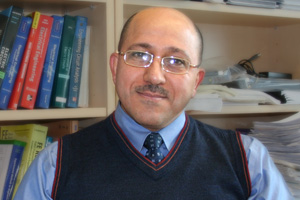UOIT researcher receives funding to advance smart energy grid solutions in Ontario
January 9, 2014

An energy systems researcher at the University of Ontario Institute of Technology (UOIT) will spend the next two years exploring innovative energy solutions for Ontario.
Dr. Hossam Gaber, Associate Professor, Faculty of Energy Systems and Nuclear Science (cross-appointed with the Faculty of Engineering and Applied Science), recently received more than $217,000 in research funding. Dr. Gaber will explore integrated modelling and simulation of Ontario energy grids of distributed energy resources to evaluate converting existing sources of energy into gas-powered (natural gas and hydrogen) smart energy grid alternatives.
The two-year project is funded by Ontario Centres of Excellence (OCE) and the Natural Sciences and Engineering Research Council (NSERC) of Canada. Industrial partners include Hydrogenics Canada (Mississauga, Ontario), Veridian Connections Inc. (Ajax, Ontario), Intergraph Canada Ltd. (Calgary, Alberta), and the MaRS Discovery District (Toronto, Ontario).
“We will evaluate potential gas-power technologies and supply scenarios for current and future energy demands,” said Dr. Gaber, the project’s principal investigator. “The long-term goals are: reduced carbon dioxide emissions, achieve strategic energy conservation strategies, and lower energy prices for homeowners and industry. We will also examine sustainable transportation options like hydrogen and natural gas for vehicles and fuel cells.”
- Sustainable energy technologies of fuel cell electric vehicles with hydrogen will be compared with compressed natural gas vehicles, and electric vehicles.
- Integrated and intelligent energy grid simulation tools will be developed to evaluate energy supply strategies with real-time data, and create maps using Intergraph’s GeoSpatial GIS technology.
Dr. Gaber is also collaborating on the project with Atomic Energy of Canada Limited (AECL) and the Ontario Power Authority (OPA).



